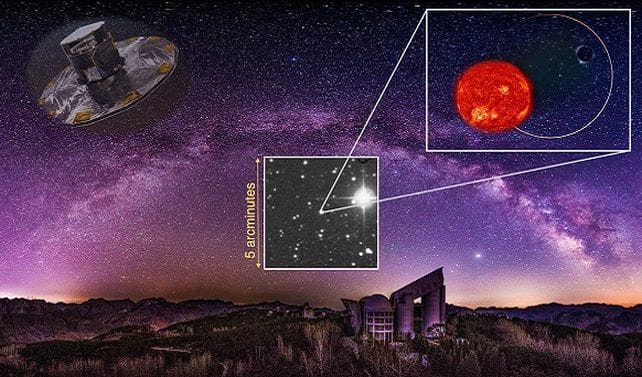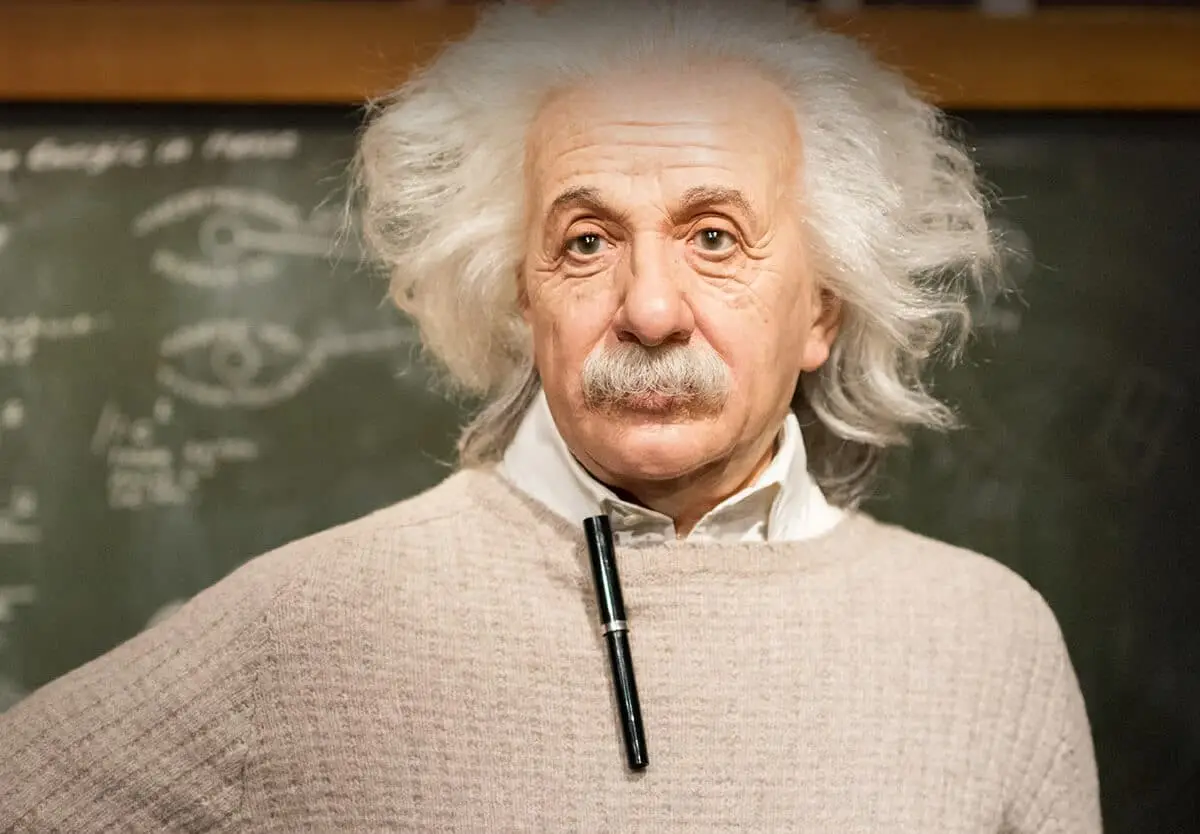- RESEARCHDistance Learning at AIU is enhanced by vast academic resources and innovative technologies build into the Virtual Campus: Hundreds of self-paced courses with video lectures and step by step lessons, thousands of optional assignments, 140,000 e-books, the Social Media & Networking platform allowing collaboration/chat/communications between students, and MYAIU develop students holistically in 11 areas beyond just academics.
- PROGRAMS OFFERED
- Areas of Study
- Courses and Curriculum
- Open Courses
- Register for a Program
- Associate Program
- Associate in Addiction Counseling
- Associate in Agriculture Food And Resources
- Associate in Anti Terrorism Security
- Associate in Behavior Analysis In Special Education
- Associate in Bioethics
- Associate in Climatology
- Associate in Cultural Theological Communication
- Associate in Culinary Arts
- Associate in Ecotechnology
- View all Associates Programs
- Bachelor Program
- Bachelors in Community Development
- Bachelors in Environmental Science
- Bachelor in Education (B.Ed, BS)
- Bachelors in Economics
- Bachelors in Entrepreneurship
- Bachelors in Financial Administration
- Bachelors in Human Resource Management
- Bachelors in Linguistics
- Bachelors in Nutritional Science
- Bachelors in Occupational Health and Safety
- Bachelors in Psychology
- View all Bachelor Programs
- Doctorate Program
- Doctor | of Biology (PhD)
- Doctorate in Business Administration (DBA, PhD)
- Doctor of Economics (PhD)
- Doctor of Electrical Engineering (D.Sc, PhD)
- Doctor of Finance (PhD)
- Doctorate in International Relations
- Doctorate in Information Technology (D.Sc)
- Doctor of Legal Studies (PhD)
- Doctor of Project Management (PhD)
- Doctor of Sociology (PhD, D.Sc)
- Doctorate in Sustainable Natural Resources Management
- View all Doctorate Programs
- Master Program
- Postdoctoral Program
- Postdoctoral in Animal Science
- Postdoctoral in Anti Terrorism Security
- Postdoctoral in Behavior Analysis In Special Education
- Postdoctoral in Bioethics
- Postdoctoral in Blockchain Technology and Digital Currency
- Postdoctoral in Business Management
- Postdoctoral in Cloud Computing
- Postdoctoral in Computer Engineering
- View all Postdoctoral Programs
AIU offers a wide range of majors in areas including the Arts, Business, Science, Technology, Social, and Human studies. More than 120 degrees and programs are available for adult learners at the associate’s, bachelor’s, master’s, doctoral and postdoctoral level. - VIRTUAL CAMPUS
Distance Learning at AIU is enhanced by vast academic resources and innovative technologies build into the Virtual Campus: Hundreds of self-paced courses with video lectures and step by step lessons, thousands of optional assignments, 140,000 e-books, the Social Media & Networking platform allowing collaboration/chat/communications between students, and MYAIU develop students holistically in 11 areas beyond just academics.
- ALUMNI
The world is YOUR campus!”, that is the message of AIU’s month magazine Campus Mundi. Hear the voices and see the faces that make up AIU. Campus Mundi brings the world of AIU to you every months with inspirational stories, news and achievements by AIU members from around the world (students and staff are located in over 200 countries).
Exploring the Secrets of G3425: Unveiling the Universe's Smallest Black Hole

Why is the discovery of G3425 significant in the study of black hole astrophysics?
What observational techniques were crucial in detecting G3425, and how do they contribute to our understanding of the universe?
What are the implications of G3425’s circular orbit for our understanding of binary star evolution and supernova dynamics?
Write an essay addressing all three questions above. Explore the implications of G3425’s discovery for black hole astrophysics, the importance of observational techniques in detecting such elusive objects, and the broader implications for our understanding of binary star evolution and supernova dynamics. Support your answers with scientific evidence and discuss potential future discoveries that could further enhance our knowledge of low-mass black holes in the universe.
(Login to your student section to access the AIU Additional Resources Library.)
Exploring the Secrets of G3425: Unveiling the Universe's Smallest Black Hole
In the vast expanse of the Milky Way, where stars dance in cosmic waltzes and mysteries lurk in the darkness, astronomers have uncovered a tantalizing secret. Meet G3425, a celestial oddity residing some 5,825 light-years from Earth. Here, a red giant star performs a peculiar orbital dance with an unseen partner.

What’s intriguing is the absence of light where this companion should be—a telltale sign that hints at the presence of a black hole, and not just any black hole, but potentially the smallest one ever detected. And it is one of the most attractive recent additions to the astronomical studies that happened in this year – 2024. At AIU, our unique degrees on astronomy like the Bachelors in Astronomy are always updated with what’s happening new like this up in the moons and stars!
The Quest for the Smallest Black Hole
Black holes, those enigmatic cosmic vacuum cleaners, come in various sizes. Typically, they form from the remnants of massive stars that have exhausted their nuclear fuel and collapsed under their own gravity. But what makes G3425 special is its mass—a mere 3.6 times that of our Sun, placing it squarely in a controversial region known as the lower mass gap of black holes.
The discovery of G3425 challenges the conventional understanding of black hole formation. According to current theories, stars with initial masses up to about 25 times that of the Sun can undergo gravitational collapse to form black holes. These stellar remnants are categorized based on their masses: neutron stars, white dwarfs, and black holes. Neutron stars, which are dense cores left behind after supernova explosions, typically have masses up to around 2.3 times that of the Sun. Beyond this threshold, the collapse under the immense gravitational pressure is so intense that a black hole is formed.
However, the lower mass gap poses a puzzle. While neutron stars can form up to about 2.3 solar masses, black holes with masses less than about 5 solar masses are rarely observed. G3425, with its estimated mass of 3.6 solar masses, represents a rare find that could provide crucial insights into the formation mechanisms of these elusive cosmic entities.
Signs in the Stars: Detecting G3425
Discovering G3425 wasn’t a stroke of luck but a triumph of meticulous observation and cutting-edge technology. Astronomers led by Song Wang of the Chinese Academy of Sciences utilized the Gaia mission’s data along with spectroscopic insights from the Large Aperture Multi-Object Spectroscopic Telescope. These tools revealed subtle motions and gravitational perturbations in the movements of nearby stars, pointing towards the presence of an invisible, compact companion tugging at the red giant.
The Gaia mission, launched by the European Space Agency (ESA), has revolutionized our understanding of the Milky Way galaxy. By measuring the precise positions, distances, and motions of over a billion stars, Gaia has enabled astronomers to detect subtle deviations in star movements that betray the gravitational influence of unseen companions—such as black holes—in binary star systems.
Spectroscopic observations conducted using advanced telescopes like the Large Aperture Multi-Object Spectroscopic Telescope (LAMOST) provide crucial insights into the nature of G3425’s companion. By analyzing the light emitted by the red giant star and detecting subtle shifts caused by the gravitational pull of the unseen black hole, astronomers can estimate the mass and orbit of the invisible companion.
A Dance of Gravity: Understanding the Orbit
What makes G3425 particularly intriguing is its orbital dynamics. Unlike many other binary systems involving black holes, G3425 exhibits a remarkably circular orbit. This suggests a long-term stability that challenges our current understanding of black hole binary formation. Typically, the violent explosion of a supernova that births a black hole can impart significant energy, leading to elliptical orbits or even ejections from the system altogether. Yet, here we see a serene, circular pas de deux between a red giant and its elusive partner.
The stability of G3425’s orbit raises intriguing questions about the formation history of its components. Binary star systems are formed through complex interactions during stellar birth and evolution. When one star in a binary system undergoes a supernova explosion, it can leave behind a compact remnant—a neutron star or a black hole—while its companion star may remain in a close orbit or be flung away depending on the explosion’s dynamics. The fact that G3425 exhibits a wide, circular orbit challenges existing models of binary evolution and supernova explosions, suggesting that our understanding of these processes may need revision.
Peering into Darkness: The Challenge of Finding Small Black Holes
Detecting small black holes like G3425 is no easy feat. Unlike their more massive counterparts, which can emit detectable X-rays as they devour nearby material, smaller black holes remain hidden unless they actively accrete matter. This invisibility complicates their identification and underscores the importance of missions like Gaia, which maps the Milky Way in unprecedented detail, allowing astronomers to spot subtle anomalies in stellar motions that betray the presence of unseen companions.

The discovery of G3425 highlights the need for continued advancements in observational techniques and theoretical models to unravel the mysteries of low-mass black holes. While G3425 provides a tantalizing glimpse into this elusive population of cosmic objects, astronomers are eager to identify more examples scattered throughout the galaxy. Future missions, such as the James Webb Space Telescope (JWST) and the upcoming Extremely Large Telescope (ELT), promise to push the boundaries of observational astronomy and shed further light on the nature and formation mechanisms of small black holes.
Theoretical Conundrums: Explaining the Lower Mass Gap
The discovery of G3425 reopens the debate surrounding the lower mass gap of black holes. For years, astronomers have struggled to find black holes weighing less than five solar masses. Is this due to observational limitations, or does nature indeed impose a barrier to the formation of such compact black holes? Theorists speculate that the collapse of stars into black holes may be influenced by a variety of factors, including the dynamics of binary star systems and the mechanisms of supernova explosions.
The mass gap between neutron stars and black holes has long puzzled astronomers. Neutron stars, which form from the remnants of massive stars after supernova explosions, can have masses up to about 2.3 times that of the Sun. Beyond this threshold, the collapse under the immense gravitational pressure is so intense that a black hole is formed. However, the lower mass gap poses a puzzle. While neutron stars can form up to about 2.3 times the mass of the Sun, black holes with masses less than about 5 solar masses are rarely observed. G3425, with its estimated mass of 3.6 solar masses, represents a rare find that could provide crucial insights into the formation mechanisms of these elusive cosmic entities.
Implications for Astrophysics: Lessons from G3425
Beyond its intrinsic fascination, G3425 holds profound implications for our understanding of astrophysics. Studying its properties—its mass, orbit, and interaction with its stellar companion—could offer crucial insights into the formation and evolution of binary star systems. It challenges existing models of black hole formation and highlights the need for a more nuanced understanding of stellar dynamics in extreme environments.
The discovery of G3425 and other low-mass black holes could also shed light on the broader implications for galaxy evolution. Black holes are believed to play a crucial role in regulating the growth of galaxies by influencing star formation and redistributing matter through energetic processes like accretion and outflows. Understanding the demographics and properties of low-mass black holes like G3425 will contribute to refining our models of galaxy evolution and the interconnectedness of cosmic structures over cosmic time.
Future Prospects: Unveiling the Population of Low-Mass Black Holes
The journey doesn’t end with G3425. Astronomers are now poised to hunt for more low-mass black holes scattered throughout our galaxy. Future spectroscopic and astrometric observations promise to unveil a diverse population of these cosmic enigmas, shedding light on their formation mechanisms and the broader implications for our understanding of the universe’s evolution.
Future missions, such as the James Webb Space Telescope (JWST) and the upcoming Extremely Large Telescope (ELT), promise to push the boundaries of observational astronomy and shed further light on the nature and formation mechanisms of small black holes. The advanced capabilities of these telescopes will enable astronomers to study the properties of G3425-like systems in unprecedented detail, providing new insights into their origins and evolutionary paths.
Conclusion: G3425 and Beyond—A Window into Cosmic Mysteries
In conclusion, G3425 stands as a beacon in the night sky, guiding us towards a deeper understanding of the smallest and most elusive members of the black hole family. Its discovery not only expands our catalog of celestial objects but also challenges us to rethink existing paradigms in astrophysics. As we peer into the vastness of space, armed with ever more powerful telescopes and sophisticated techniques, the secrets of G3425 and its kin await, ready to reveal new chapters in the cosmic story of birth, life, and death.

The universe is vast, and there is much we have yet to discover. G3425 represents just one piece of the puzzle—a tantalizing glimpse into the complexities of stellar evolution and the mysterious realms of black holes. As we continue our journey of exploration, each discovery brings us closer to unraveling the profound mysteries that lie hidden among the stars. Join the AIU community to stay connected with the latest space updates!
Beyond Earth: The Expanding Horizons of Space Exploration
Orbital motion of test particles in regular Hayward black hole space–time
Slicing Spaces : Performance of Architecture in Cinema
References
Mysterious object may be smallest black hole ever found
Mysterious Signal Hints at The Smallest Black Hole Ever Detected : ScienceAlert
Reminder to our Dear Students,
Please ensure you are logged in as a student on the AIU platform and logged into the AIU Online
Library before accessing course links. This step is crucial for uninterrupted access to your learning
resources.
AIU Success Stories







Contact Us Today!
Begin Your Journey!
AIU’s Summer of Innovation and Growth gives you the ability to earn up to $5000 in tuition credit by completing free lessons and courses.
Whether you’re looking to acquire new skills, advance your career, or simply explore new interests, AIU is your gateway to a world of opportunities. With free access to 3400 lessons and hundreds of courses the ability to earn credits and earn certificates there’s no better time to start learning.
Join us today as a Guest Student and take the first step towards a brighter, more empowered future.
Explore. Learn. Achieve.

Contact Us
Atlantic International University
900 Fort Street Mall 905 Honolulu, HI 96813 [email protected]
Quick Links
Home | Online Courses | Available Courses | Virtual Campus | Career Center | Available Positions | Ask Career Coach | The Job Interview | Resume Writing | Accreditation | Areas of Study | Bachelor Degree Programs | Masters Degree Programs | Doctoral Degree Programs | Course & Curriculum | Human Rights | Online Library | Representations | Student Publication | Sponsors | General Information | Mission & Vision | School of Business and Economics | School of Science and Engineering | School of Social and Human Studies | Media Center | Admission Requirements | Apply Online | Tuition | Faculty & Staff | Distance Learning Overview | Student Testimonials | AIU Blogs | Register for Program | Privacy Policy | FAQ



















